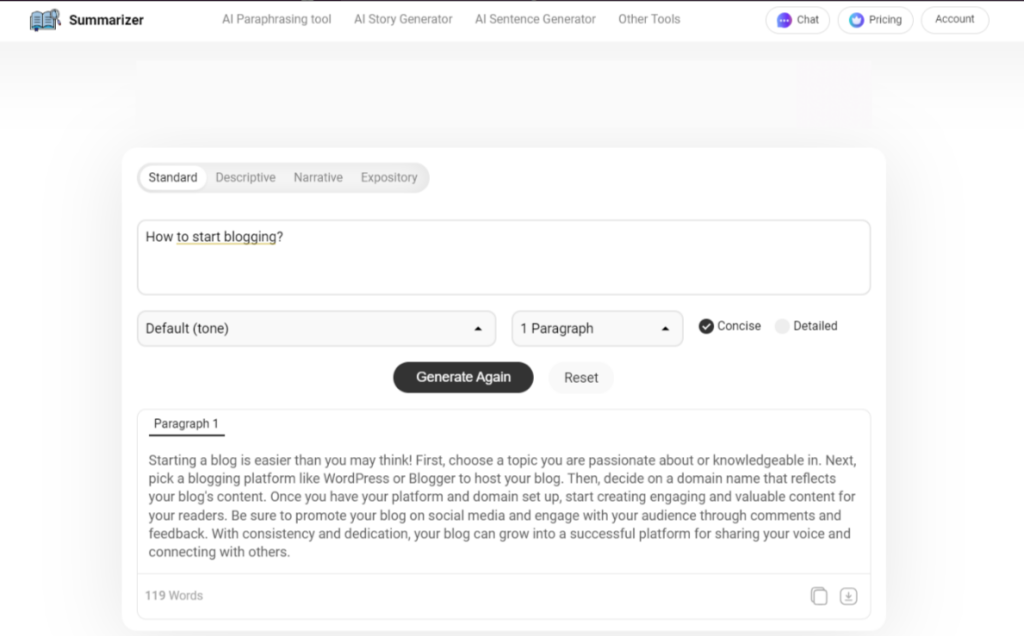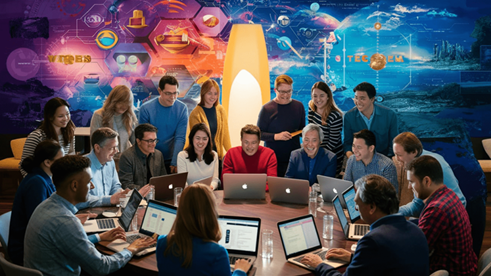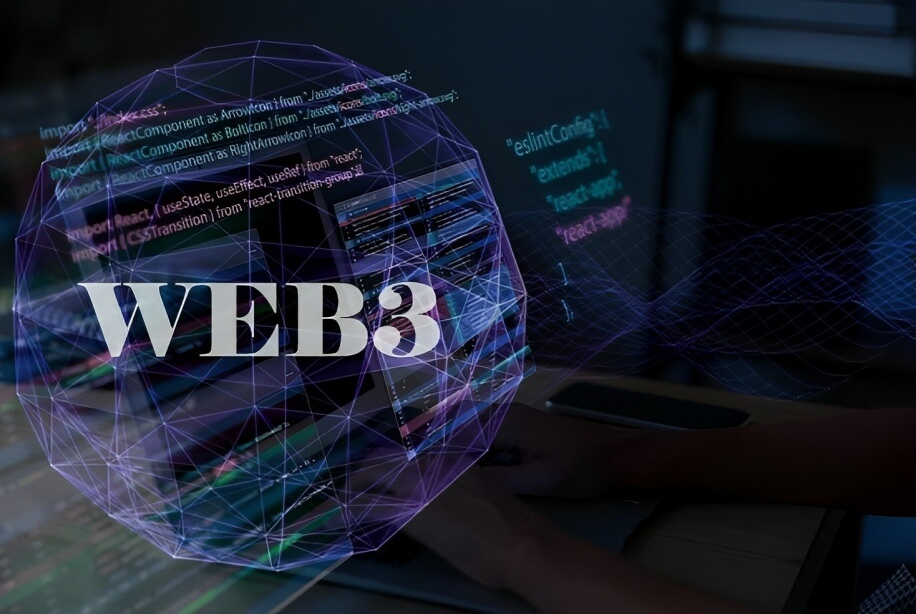Generative AI, or Gen AI for short, is revolutionizing the way we handle the creation of things in industries. The smart algorithms aptly understand human input and respond with scaringly high accuracy.
This allows content creators, marketers, programmers, and other field professionals to get highly personalized responses, aiding them with their work.
Besides the ability to understand and give outputs based on user requirements, Gen AI is also very quick to function.
This allows industry leaders to get done with their projects with less resources wasted. Thus, improving productivity and efficiency of tasks performed.
In this post, we aim to highlight the industries impacted by generative AI development services and how this technology is helping in various scenarios. So, let’s get started.
Positive Impacts of Generative AI in Industries with Creativity
Below, we’ve mentioned some ways in which Gen AI is fruitful for creative industries. Follow closely to avoid missing out on any point.
- Unparalleled innovation
Humans have limitations when it comes to generating ideas or brainstorming for content creation. However, generative AI works at unparalleled speeds to give unique, innovative approaches to content. That may be a portrait of something, or written content for blogs, articles, or using AI to create video from script is another way to use technology to your advantage.
Artificial Intelligence helps humans to quickly traverse through challenging tasks, thus uplifting their productivity (more on this later.)
Recently, designers, filmmakers, and related professionals have started using image-generation engines like DALL-E 2 to get innovations in their ideas. This helps them get better posters for short films, advertisements, etc. So, more people are willing to go to their premieres. By leveraging AI poster generator platforms, designers and filmmakers can elevate the quality of their promotional materials, attracting more viewers to their premieres.
- Enhancing outcomes
Not only does generative AI provide ideas to spark creativity, but it also helps enhance the end products.
Research by Robert Half indicated that around 40% of individuals in the US were happy to use Gen AI tools in their day-to-day work. The reason is that the results of the projects turned out to be significantly better, making respective stakeholders satisfied.
Nowadays, digital marketers use a lot of GenAI tools to tailor their written content according to the audience. For example, maintaining tonal consistency in a post or breaking writer’s block by using an AI paragraph generator.

This optimization of content makes the marketer’s posts highly attractive and personalized to the target market, resulting in more conversions.
- Improved working efficiency
No one has the time to research manually for releasing a whitepaper. Instead, Gen AI tools that are paired with Natural Language Processing like an AI summarizer can be used to quickly read through all the input articles and present you with a comprehensive summary.
Thus, you can quickly get done with the research process and proceed to writing your crafts in no time.
For instance, generative AI can significantly enhance content creation by quickly generating ideas, structuring content, or even drafting full-length articles based on your input. This greatly reduces the time spent on manual brainstorming and writing.
Advantages of using Generative AI include faster content creation, higher efficiency in research, and the ability to generate ideas from a vast amount of data in a shorter period.
Recent research by Goldman and Sachs suggests that generative AI can automate about 26% of all work tasks in arts, design, entertainment, and other creative industries.
Source: Weforum.org
This means that by the coming time, we could see a lot of Gen AI applications being useful in a variety of professional fields.
Since Artificial Intelligence is lightning-fast in its functioning, we’re expecting that productivity will significantly improve for all industries. Hence, allowing persons to get more work done in a short time.
- Identifying areas for future growth
Gen AI does have the capability of taking human inputs and analyzing trends and patterns in huge chunks of data. Thus, enabling us to get insights regarding potential weaknesses and strengths.
Tools like Tableau quickly process big data and give easy-to-understand verdicts regarding the tested variables.
Identifying areas of growth gives companies and businesses a cutting edge over others. They’re able to make informed decisions, boosting their sales and profits to the next level.
Besides this, Generative AI can also help you re-strategize your business moves. You can give the tools your entire situation and they’ll recommend what to do next, according to your present niche. Gen AI is a sea of knowledge and business professionals are all over it.
Challenges and Ethical Considerations with Gen AI
After learning the benefits of Gen AI, it’s time to learn the challenges and ethical considerations associated with them for creative industries.
- Copyright issues
The most common problem with Gen AI is that it takes up ideas from the internet. So, there’s a high chance that the slogan, or infographic that you just made from Generative tools is a borrowed idea from elsewhere.
To avoid this issue, one must learn to add a personal touch to the crafts. For example, changing some words (synonymizing) in written content. Or, changing sentence structures a bit for better readability.
Similarly, designers using generative AI tools like Adobe Sensei need to be careful that they don’t just copy and paste the ideas from the software. Sure, they can take AI’s help for blending and editing objects in a photo with or without a background.
However, they are required to make changes to the overall structure, text, color, or pattern of a logo, image, or infographic to avoid having any legal issues.
- Data biases
Many Gen AI tools are found guilty of making up information or words that have no contextual link with each other.
This usually happens when chatbots or other generative applications are required to give lengthy outputs. Or, if they’re given inputs larger than their context window.
To avoid this problem, proofread or go over the results of Gen AI applications carefully. See if the output is aligning with your goals. Then, check for the authenticity of facts and figures provided by the generative AI with a quick search.
You have to learn to produce genuine, 100% true content with Gen AI applications. Otherwise, you can get into trouble.
- Balancing automation and human input
Despite the fact that Gen AI can perform the majority of the tasks, industries need to define the extent of AI application and human intervention. This means to find a good balance between automation and human input.
For example, a generative AI tool, like the SlideBazaar PowerPoint plugin, can create a PowerPoint presentation. However, it’s up to the humans to add story-telling elements to it. The AI can create a base upon which manual touches are required to create an extraordinary product.
Creative organizations, like digital marketing and SEO agency businesses need to define clear boundaries as in how much AI is acceptable in projects and where human touch should be necessary. Content creation is a strong example for this.
- Sophisticated phishing
Due to the significant improvement of generative AI technology like Deepfake, it is now very common to create cyber-scams.
For example, a person can convince others that they’re a very rich, famous politician asking for donations. However, in reality, they might just be regular teenagers.
The advancement of generative AI technology in media has led to many instances of sophisticated phishing. Thus, it is yet another challenge associated with Gen AI.
However, researchers have started to come up with new tactics to debunk super-realistic Deepfakes to tell what is true and what’s not. This work may require a bit more time, but we will eventually get to the bottom of it.
Final Words
Generative AI, or Gen AI, is transforming industries by providing innovative and personalized solutions with unprecedented speed and accuracy.
This technology is enhancing creativity and productivity in fields such as content creation, marketing, and design. Gen AI is improving outcomes and efficiency, automating tasks, and identifying areas for growth, giving companies a competitive edge.
Despite concerns like data biases and phishing, ongoing research aims to mitigate risks and maximize the benefits of generative AI in various professional sectors.
FAQs
Q: What is Generative AI (Gen AI)?
The term generative AI can be defined as a subfield of AI that focuses on the creation of content including text, images, sounds and even videos from the large datasets.
Q: Is Generative AI affecting the creative Industries?
Yes, Gen AI is changing the creative industries through the improvement of innovation, productivity, and efficiency. It is assisting professionals such as designers, marketers and filmmakers in developing exclusive materials in a shorter time.
Q: How can businesses guarantee that the content produced by AI is original?
Organizations should make modifications in the AI content which include rearranging sentences, changing words or even modifying designs with self-input.
Q: How can the organizations prevent the data biases in the outputs of AI?
To avoid biases, the output of AI should be scrutinized, analyzed and checked to make sure that it meets the intended purpose of the organization and is truthful.
Q: What strategies can organizations use to ensure they get the best of both automation and human input?
Organizations can adopt AI to run rule-based or tedious processes and free up employees’ time to work on value-added processes.



